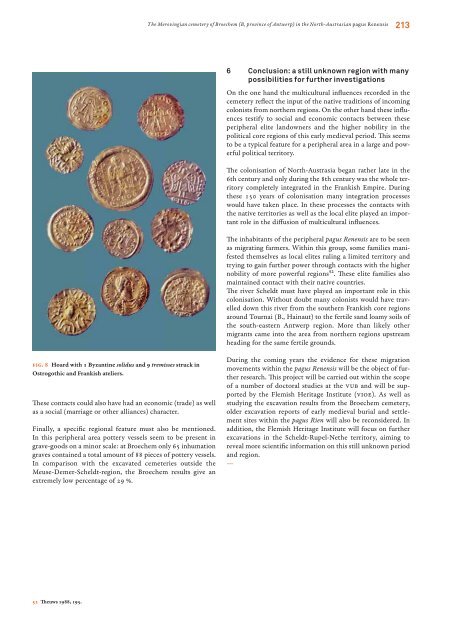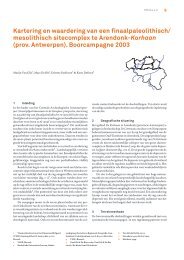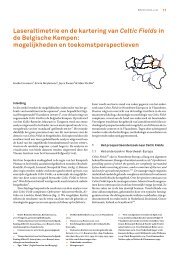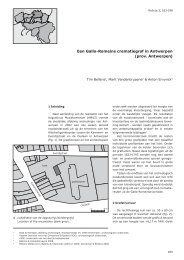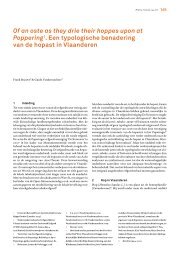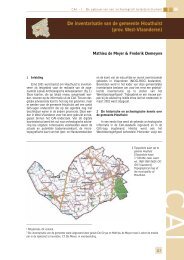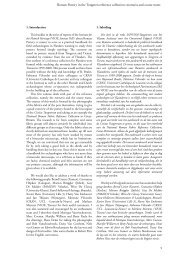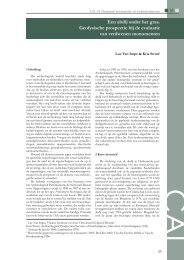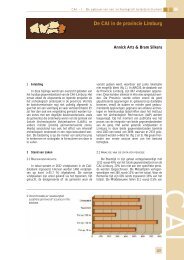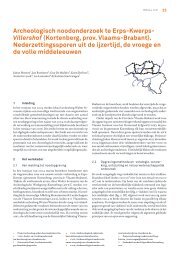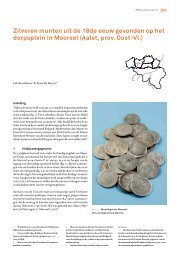Exchanging Medieval Material Culture Studies on archaeology and ...
Exchanging Medieval Material Culture Studies on archaeology and ...
Exchanging Medieval Material Culture Studies on archaeology and ...
Create successful ePaper yourself
Turn your PDF publications into a flip-book with our unique Google optimized e-Paper software.
Fig. 8 Hoard with 1 Byzantine solidus <strong>and</strong> 9 tremisses struck in<br />
Ostrogothic <strong>and</strong> Frankish ateliers.<br />
Th ese c<strong>on</strong>tacts could also have had an ec<strong>on</strong>omic (trade) as well<br />
as a social (marriage or other alliances) character.<br />
Finally, a specifi c regi<strong>on</strong>al feature must also be menti<strong>on</strong>ed.<br />
In this peripheral area pottery vessels seem to be present in<br />
grave-goods <strong>on</strong> a minor scale: at Broechem <strong>on</strong>ly 65 inhumati<strong>on</strong><br />
graves c<strong>on</strong>tained a total amount of 88 pieces of pottery vessels.<br />
In comparis<strong>on</strong> with the excavated cemeteries outside the<br />
Meuse-Demer-Scheldt-regi<strong>on</strong>, the Broechem results give an<br />
extremely low percentage of 29 %.<br />
52 Th euws 1988, 195.<br />
The Merovingian cemetery of Broechem (B, province of Antwerp) in the North-Austrasian pagus Renensis 213<br />
6 C<strong>on</strong>clusi<strong>on</strong>: a still unknown regi<strong>on</strong> with many<br />
possibilities for further investigati<strong>on</strong>s<br />
On the <strong>on</strong>e h<strong>and</strong> the multicultural infl uences recorded in the<br />
cemetery refl ect the input of the native traditi<strong>on</strong>s of incoming<br />
col<strong>on</strong>ists from northern regi<strong>on</strong>s. On the other h<strong>and</strong> these infl uences<br />
testify to social <strong>and</strong> ec<strong>on</strong>omic c<strong>on</strong>tacts between these<br />
peripheral elite l<strong>and</strong>owners <strong>and</strong> the higher nobility in the<br />
political core regi<strong>on</strong>s of this early medieval period. Th is seems<br />
to be a typical feature for a peripheral area in a large <strong>and</strong> powerful<br />
political territory.<br />
Th e col<strong>on</strong>isati<strong>on</strong> of North-Austrasia began rather late in the<br />
6th century <strong>and</strong> <strong>on</strong>ly during the 8th century was the whole territory<br />
completely integrated in the Frankish Empire. During<br />
these 150 years of col<strong>on</strong>isati<strong>on</strong> many integrati<strong>on</strong> processes<br />
would have taken place. In these processes the c<strong>on</strong>tacts with<br />
the native territories as well as the local elite played an important<br />
role in the diff usi<strong>on</strong> of multicultural infl uences.<br />
Th e inhabitants of the peripheral pagus Renensis are to be seen<br />
as migrating farmers. Within this group, some families manifested<br />
themselves as local elites ruling a limited territory <strong>and</strong><br />
trying to gain further power through c<strong>on</strong>tacts with the higher<br />
nobility of more powerful regi<strong>on</strong>s52. Th ese elite families also<br />
maintained c<strong>on</strong>tact with their native countries.<br />
Th e river Scheldt must have played an important role in this<br />
col<strong>on</strong>isati<strong>on</strong>. Without doubt many col<strong>on</strong>ists would have travelled<br />
down this river from the southern Frankish core regi<strong>on</strong>s<br />
around Tournai (B., Hainaut) to the fertile s<strong>and</strong> loamy soils of<br />
the south-eastern Antwerp regi<strong>on</strong>. More than likely other<br />
migrants came into the area from northern regi<strong>on</strong>s upstream<br />
heading for the same fertile grounds.<br />
During the coming years the evidence for these migrati<strong>on</strong><br />
movements within the pagus Renensis will be the object of further<br />
research. Th is project will be carried out within the scope<br />
of a number of doctoral studies at the vub <strong>and</strong> will be supported<br />
by the Flemish Heritage Institute (vioe). As well as<br />
studying the excavati<strong>on</strong> results from the Broechem cemetery,<br />
older excavati<strong>on</strong> reports of early medieval burial <strong>and</strong> settlement<br />
sites within the pagus Rien will also be rec<strong>on</strong>sidered. In<br />
additi<strong>on</strong>, the Flemish Heritage Institute will focus <strong>on</strong> further<br />
excavati<strong>on</strong>s in the Scheldt-Rupel-Nethe territory, aiming to<br />
reveal more scientifi c informati<strong>on</strong> <strong>on</strong> this still unknown period<br />
<strong>and</strong> regi<strong>on</strong>.<br />
—


